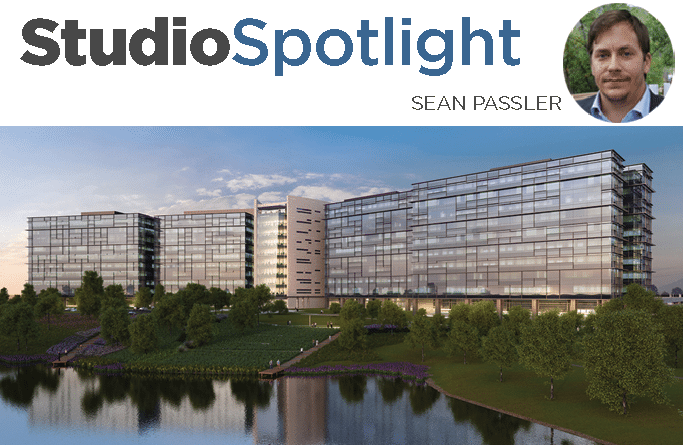Sean Passler is an Associate in OJB’s Houston office.
What inspired you to become a landscape architect?
My inspiration for becoming a landscape architect evolved naturally through a collection of experiences over time. As a child, my parents noticed that I was always drawing so they enrolled me in advanced art classes when I was 6 years old. I would typically use pen and ink or graphite, but I would also dabble with paint and clay as well. Creating things and exploring different art mediums has been a part of my life ever since, so that skillset has always carried with me through the years.
Additionally, I would spend a lot of my time working at a local garden center and landscape company, which introduced me to plants and the process of implementing designs within the landscape. I worked around the garden center bagging up soils, mulch and sand, and I would also water all the plants and make sure the inventory remained organized. We had a few residential projects at the time and won a large contract with a few neighborhoods to install new landscaping along the streets so I would work with the landscape crews often. That was my first experience of being in the field and putting plants in the ground.
How has an artist or landscape architect influenced your design and plant materials?
It is tough to say that one person or designer has influenced my work. When designing, I tend to draw inspiration from a collection of ideas and other bits of information that I have adopted from travel as well as classmates, professors, mentors, co-workers and other leaders within the profession.
Recently, I had the opportunity to travel to Colorado and explore Rocky Mountain National Park. Getting out of the city and surrounding yourself with nature is a refreshing experience. The most inspiring part of being in the park for me was being able to navigate through the different ecosystems along the drive through the park, and the contrast between the scale of being in the city and the scale of being surrounded by wilderness and large, expansive natural features.
What is your focus when designing? What makes your work rewarding?
When designing landscapes, the focus for each project is to create spaces that are not only functional and beautiful, but spaces that provide a unique and memorable experience. The most rewarding part of each project is to see a space being transformed and used many different ways.
Where do you go to feel inspired?
Inspiration for me comes from simply getting outside. One of the perks of living in a large city is that it’s filled with many different spaces to explore. For me, inspiration comes from urban areas throughout the city and rural land outside the city. Two of my favorite places to go in Houston are Memorial Park and Menil Park. Memorial is a great place to explore because of the size of the park and the variety of active programming. It’s easy to forget that you are within a highly urbanized city while being surrounded by so many trees. On the other hand, Menil Park is a small scale passive park. The main attraction is the Menil Collection Museum, which sits adjacent to the green space, but the park and museum is unique in itself because of how it is centrally located within a small residential neighborhood.
What has been your favorite OJB project to work on and why?
It’s tough to pick a favorite, but I would have to say Pioneer Natural Resources Headquarters in Irving, TX. I’ve had the privilege of working on the project from conceptual design and design development through construction documentation and now construction administration. Throughout the process of the design our team worked closely with the developer, lead architect, design architect, engineering teams and the Pioneer community. The relationship between Pioneer and the design team has really been a critical step in the design process to ensure that the new headquarters provides current and prospective employees with a world class office space and a world class landscape.
